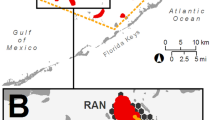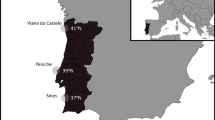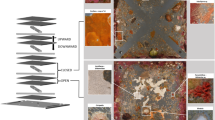Abstract
Human activities threat seashore communities in many areas of the world and their impacts on coastal ecosystem are a matter of increasing concern. Present study describes the anthropogenic disturbances on the rocky shore community structure by comparing the benthic communities of disturbed and non-disturbed areas in Sri Lanka where rocky shores remain virtually untouched so far by experimental studies. Impacts of human disturbances; trampling, handling and exploitation on the community structure of rocky macro benthic assemblages were tested in high-, mid- and low-intertidal area by stratified sampling method at Rumassala marine sanctuary and adjacent two localities at either side of the marine sanctuary, Galle and Unawatuna. Univariate measures, log series model and multivariate techniques were used to discriminate the communities with respect to the disturbances. Proximity of study localities and indistinguishable physicochemical parameters of sea surface water (temperature, Salinity, conductivity, dissolved oxygen and pH) indicated that overall environment of the study area was relatively uniform and changes in community structure was due to human disturbances. Human disturbances documented as visitor censuses by transect walk method lead to categorize the Rumassala as non-disturbed, Unawatuna as disturbed with Galle being of moderately disturbance. Community abundance showed a decreasing trend along with increasing disturbances, albeit community biomass, due to opportunistic algae species, increased in parallel to disturbances. Computed Index of disturbance revealed that macrofauna was very sensitive to the disturbances and increased disturbances reduced their competitive pressure on macroalgae, leading to outstanding macroalgal growth. Macroalgal domination in disturbed communities contributed to lessen the heterotrophic dominance in Galle and Unawatuna. 96 macrobenthic taxa were encountered from the study and Species richness, Shannon and Fisher’s diversity index showed decreasing trend with increasing disturbances. Moreover, initial rising slope of species accumulation curves for three communities indicated that community evenness was low in disturbed communities. The community compositions from dominant conservative species to fast growing opportunistic species were well described by the log series model, showing left skewed distribution. The SIMPER analysis further confirmed that most biomass dominant species in stress status were the opportunistic species such as Valoniopsis pachynema, Gracilaria cassa and Padina boerggesenii. Providing strong support to the results highlighted from univariate measures and log series model, multivariate cluster analysis and nMDS plots completely separated three communities at ordinal scale. This separation was further confirmed by one-way ANOSIM test with significantly higher (2.9%) similarity of study sites within each community. Present study indicated that, allowing less time for recovery, human activities created press-type disturbance on macro-benthic assemblages, and subsequent changes in community structure could be attributed to less suitable substrata. Study proposed that ecological stress is the best measured by multiple methods, and results from different approaches provide the robustness necessary to judge the reliability of the conclusion. Present study strongly supports the growing concern that human activities impact on intertidal assemblages all over the world by changing community composition. Present finding is a contribution to the published literature that is scarcer from tropical rocky shores.
Similar content being viewed by others
Article PDF
Author information
Authors and Affiliations
Corresponding author
Rights and permissions
About this article
Cite this article
Manage, A. Community-level analysis of anthropogenic impacts on rocky shore communities in Sri Lanka. Nat Prec (2008). https://doi.org/10.1038/npre.2008.2317.1
Received:
Accepted:
Published:
DOI: https://doi.org/10.1038/npre.2008.2317.1
Keywords
This article is cited by
-
Relationships Between Community Structure and Environmental Factors in Xixiakou Artificial Reef Area
Journal of Ocean University of China (2020)
-
Regional-scale analysis of subtidal rocky shore community
Helgoland Marine Research (2013)



